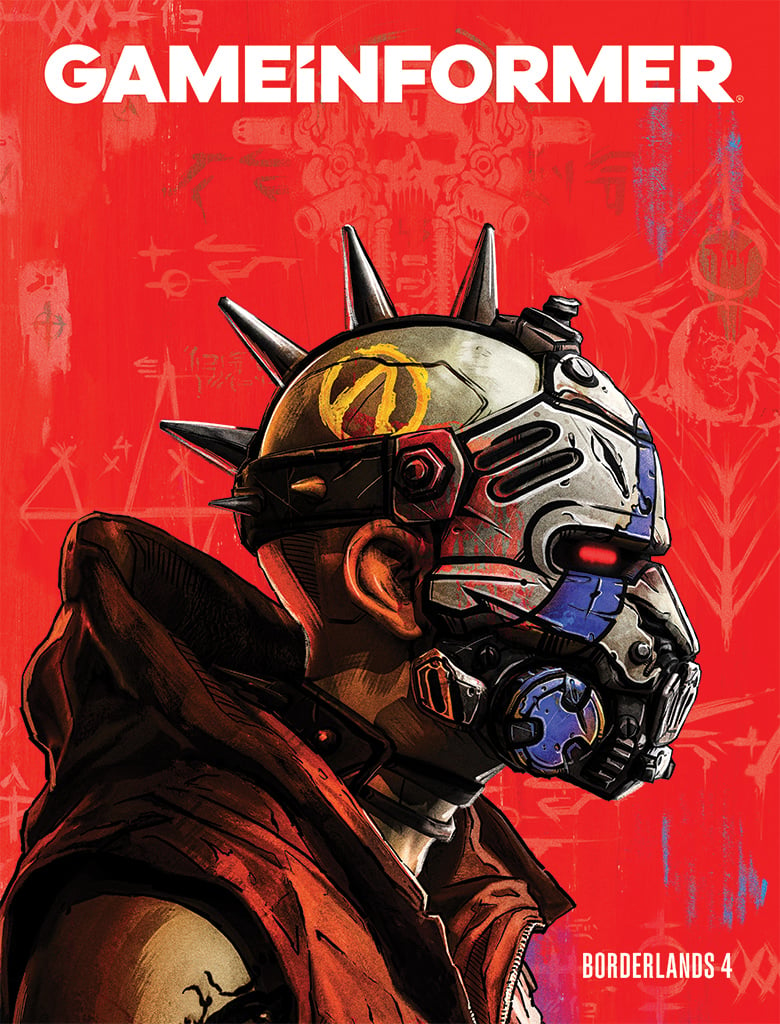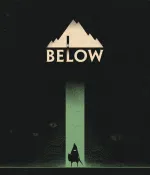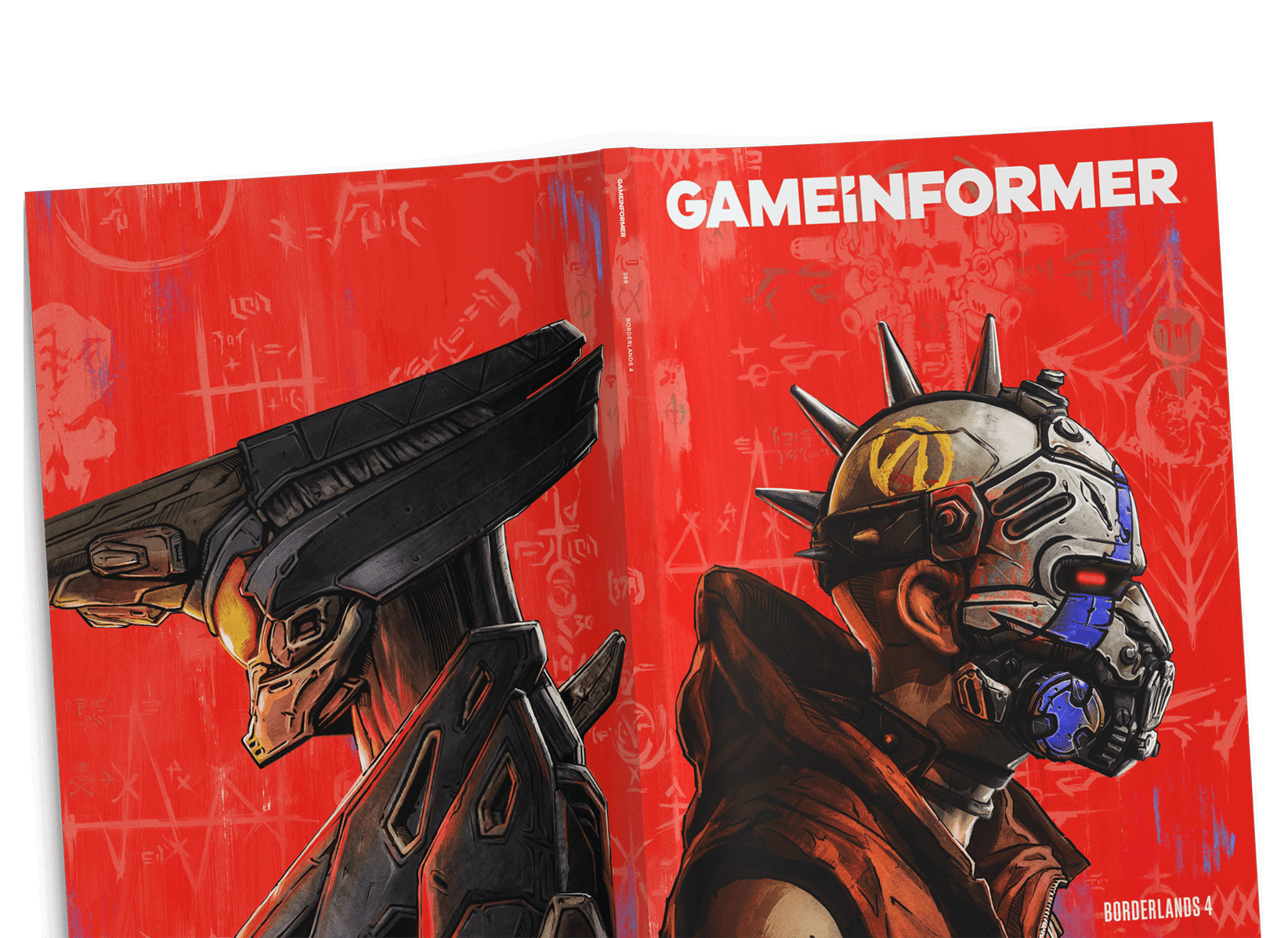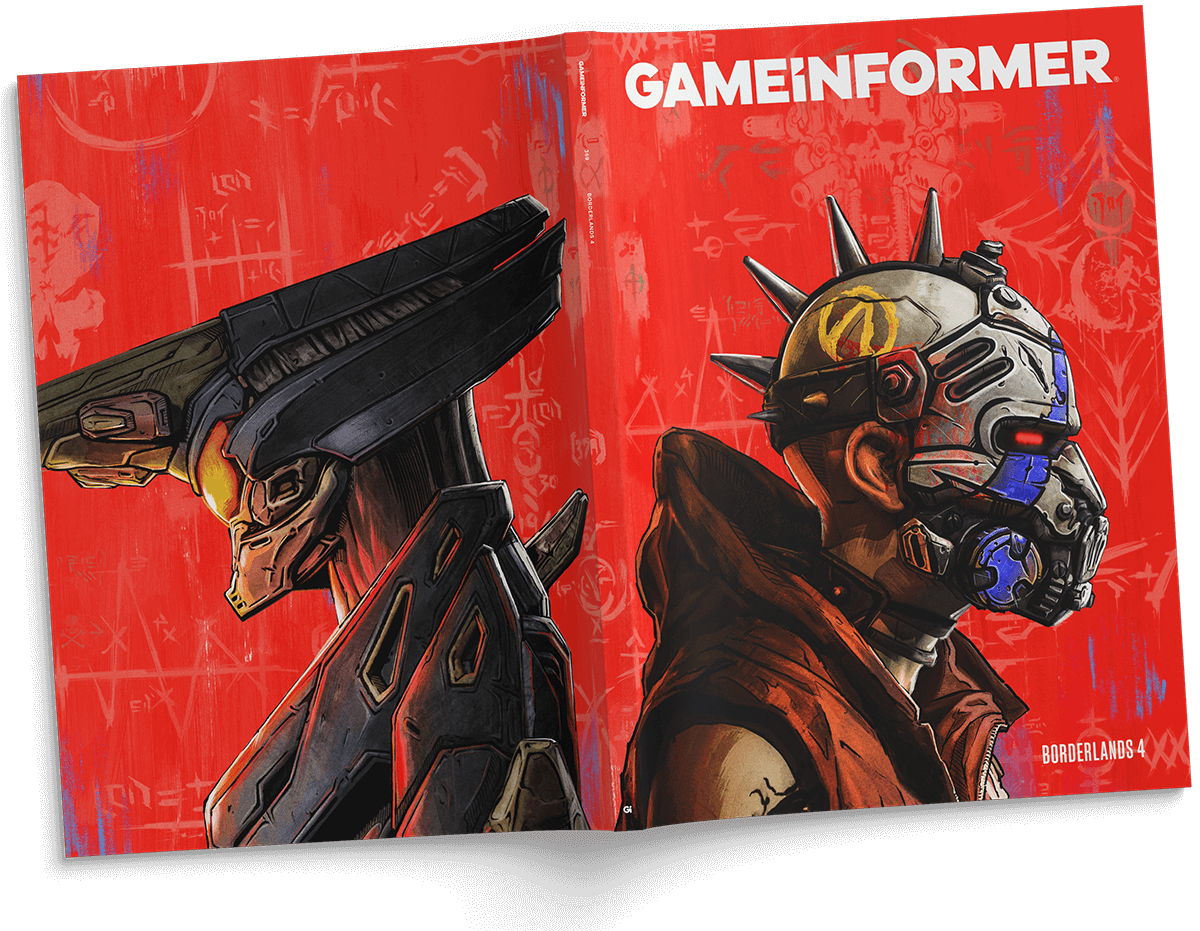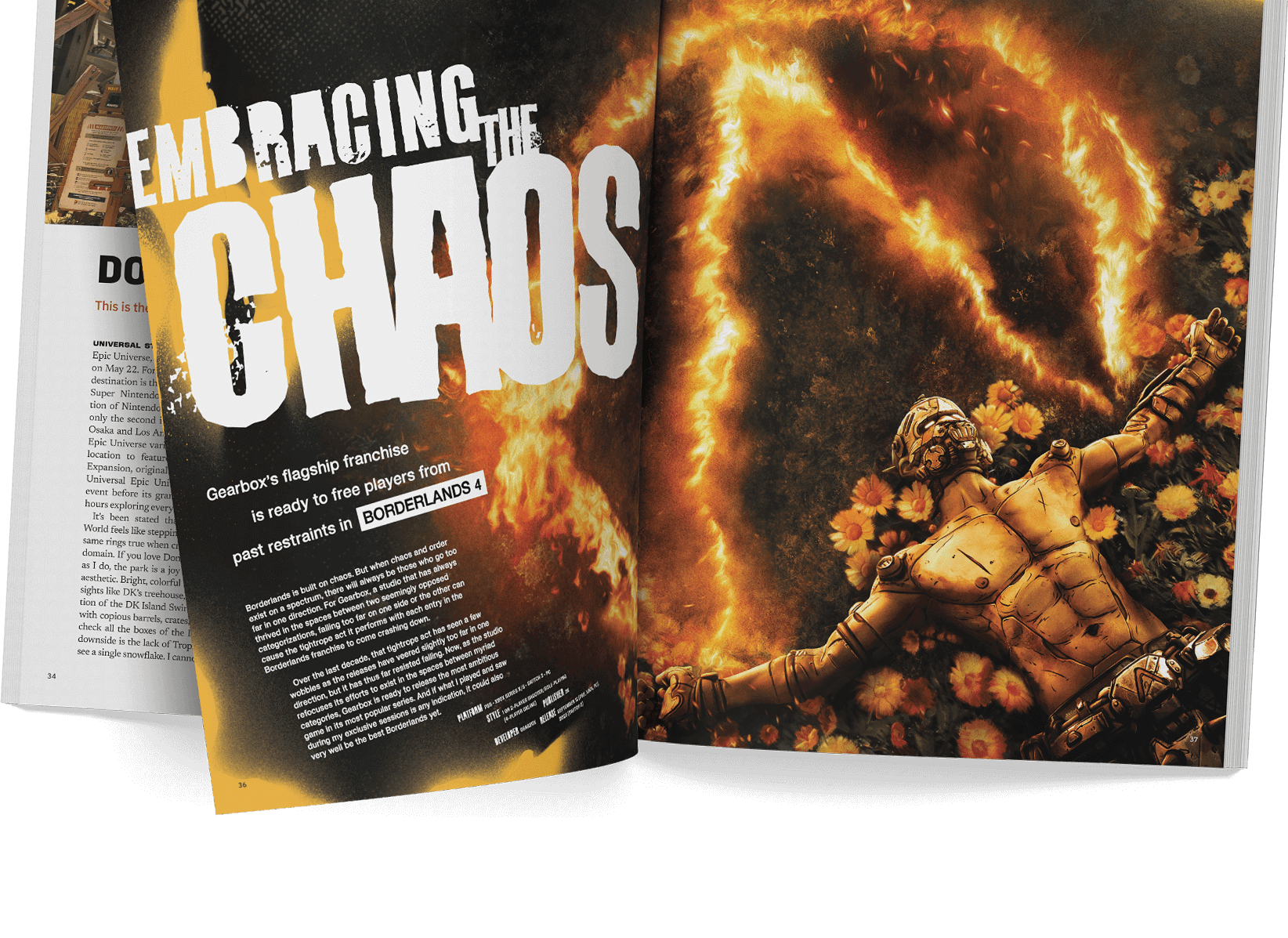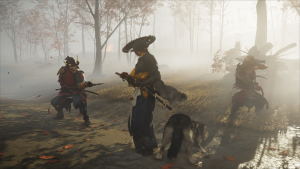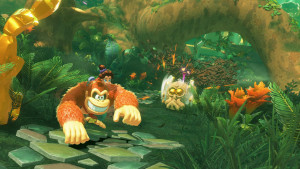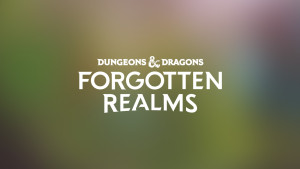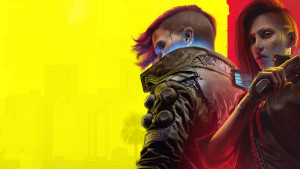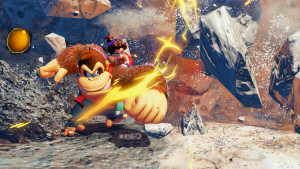Subscribe now to get the Vampire: The Masquerade – Bloodlines 2 issue and a D&D poster pack-in!
Below

[Note: This article originally appeared in issue #245 of Game Informer]
As the clouds part, they reveal an unexceptional, greenish brown island alone in a blue, rippling sea. A minute rowboat, no larger than a grain of rice from this far-off distance, slowly glides toward the landmass. Pulling up to the beach, a silent adventurer fastens the craft to a post on the shore. Moving inland, he scales a sheer cliff as the wind whips his cloak. Signs of habitation appear up ahead in the form of a rocky trail and hand-carved stone stairs. The path leads him to his destination – a towering cave at the summit. He draws his sword and enters the pitch-black passage. Who is this wanderer? Why is he here? Most importantly, what lies below?
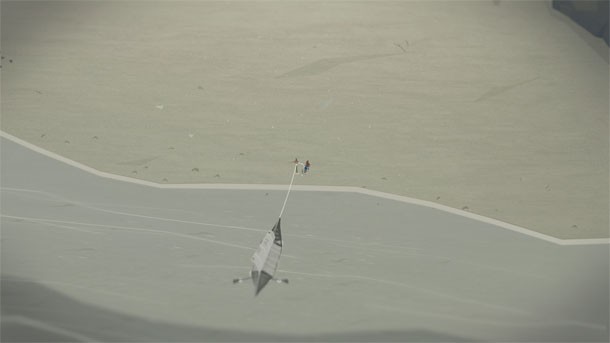
Underground Origins
The mysterious and foreboding atmosphere of Below should be familiar to fans of Toronto-based Capybara Games’ previous action/adventure title, Superbrothers: Sword & Sworcery EP. Made in collaboration with Superbrothers and composer Jim Guthrie, the game debuted to rave reviews on iOS in 2011 and later migrated to PC, Mac, and Android devices. Players controlled a character called the Scythian, who explored a mythical and imaginative world that blended point-and-click adventure with Punch-Out!! style reactive combat. It won numerous awards, including runner-up for iPad Game of the Year from Apple. The quickly growing following of fans eagerly awaited Capybara’s next project.
|
The Power Of Xbox One With mega-budget games like Titanfall, it’s easy to see how the developers are leveraging the increased horsepower of the Xbox One. But in smaller, less-flashy titles like Below, it’s not as cut- and-dried. Capy president Nathan Vella explains how the team is taking advantage of Microsoft’s new console. “Even though the game looks relatively simple, there’s a whole lot of stuff going on under the hood that uses a lot of the firepower,” he says. “But that’s kind of secondary to it. Both the persistent elements and multiplayer are using a lot of the features that are not presently available to us in any current-generation stuff. I think the push towards more connected, more ‘stuff happening in the cloud,’ allows us a lot of opportunity to do really cool stuff.” |
On the heels of this successful collaboration, Capy (the studio’s oft-used nickname) switched gears with Super Time Force, a manic action game that combines over-the-top Contra-style running and gunning with time-manipulation powers. The early concept caught Microsoft’s attention at the 2012 Independent Games Festival, and it offered Capy a publishing deal on Xbox 360. Satisfied with how things were going with Super Time Force (due to release this year), Capy brought its next project, Below, to Microsoft and worked out another publishing deal.
“We’ve been around the block enough that we’re not going to go into deals that we don’t think have a lot of big-time benefit for us,” Capy president Nathan Vella says. “In this case, being published by Microsoft Studios gave us access to [the Xbox One] early. It gave us the chance to be on stage at E3.”
Below debuted at Microsoft’s press conference between heavy hitters Battlefield 4 and Black Tusk Studios' untitled project. The road to the E3 stage was a long one. Creative director Kris Piotrowski dates the birth of the project to 2009, well before Sword & Sworcery. A fan of roguelike games since playing Angband many years ago, he got the itch to make one after immersing himself in the genre with Raigan Burns, a friend and co-creator of N+. For the unfamiliar, roguelikes are known for a few key traits: randomly generated stages, permadeath, and turn-based combat. The name comes from the first game to set the rules, 1980’s Rogue.
“There were a lot of roguelikes in my brain at that time, and at the time nobody was really exploring it,” Piotrowski recalls. “Now everybody’s exploring it.”
Titles like Demon’s Souls, Spelunky, and FTL incorporate the themes of roguelikes to varying degrees and offer unique twists on the rules. “It bummed me out a little bit when Demon’s Souls came out specifically,” Piotrowski says. “There were so many similarities in the design philosophies in that game and the game that I was trying to figure out that it did sort of bum me out for about two months. But on the bright side it made us feel a lot more confident in what we were doing. We feel good about what we’re making now thanks to those games.”
A New Take on the Roguelike
Capy’s take on the roguelike sticks very close to genre conventions in some ways and blows them apart in others. Players control a character the team currently calls The Wanderer, who is susceptible to perma-death. Fortunately, there is an endless succession of other wanderers willing to explore the island once the previous one dies. “You are playing an extremely capable character, but a character that’s also very fragile, that’s sort of one mistake away from death,” Piotrowski says. “It’s not a game about a main character. It’s a game about a lot of little characters over time working together to solve the mysteries of this world.”
This progression of new characters after deaths is a rising trend in both the roguelike genre (Rogue Legacy) and outside of it (Infinity Blade, though later revelations offer a twist). When characters die they really die; they don’t simply warp back to a checkpoint. This approach is quite appealing to those with more realistic sensibilities.
Even though players return to the enigmatic island with these new characters over and over again, the levels constantly change. Outside of several key rooms, most of the environments are randomly generated. Traditionally, this results in a bland-looking world with few details and copy-and-pasted floor and wall imagery. Capy is doing its best to avoid that.
“That’s been one of the biggest ongoing challenges that we’ve had,” Piotrowski says. “A ton of development effort has been about creating random level layouts that aesthetically feel the same as the areas that aren’t randomly generated. [Our levels] look more like cave systems that are built out of natural randomness, but they don’t have that kind of old-school, tiled look.”
Another way the team is curbing the potential player disenfranchisement that could creep in with permadeath is to foster a sense of progression. Each time one of your characters dies, it won’t be a hard reset back to square one. “Even though your character’s life is a very short and fleeting effort, whatever it is that you've managed to discover or complete or change in the world is something that your next character will be able to build on,” Piotrowski explains.
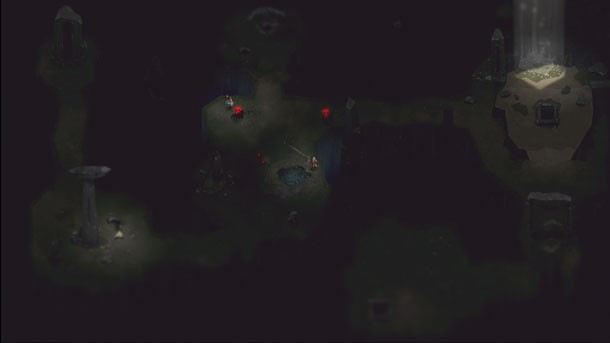
Battle Tension
One area where Below diverges from traditional roguelike tenets is in the combat. Since any move could result in death, classic games have featured turn-based battles so players can strategize and have complete control over battles. Capy’s taking a real-time action approach, though it won’t be anything like the hack-and-slash combat seen in games like Diablo and Torchlight. For players to succeed, they must evaluate the enemy’s capabilities, the surrounding environment, and the best moves and attacks provided by their currently equipped gear. The soul of roguelike battle planning and strategy is still there; you just have to do it on the fly.
“The guts of combat is relatively simple,” Vella says. “You don’t have this massive amount of weapons to choose from and moves to go through. It’s about this simple and relatively small number of choices, but because the pressure or the impact of those choices is higher, it does require you to think them through, to master them. I think that the combat is very fair. You’re never going to get screwed into dying. You’re going to die because you made a mistake or because you didn’t know what this enemy was going to do. But the next time you see them, you’ll know. At the same time, it is definitely difficult and challenging.”
|
Working With Jim Guthrie Capybara connected with composer Jim Guthrie through Superbrothers’ Craig Adams and instantly hit it off. His soundtrack to Superbrothers: Sword & Sworcery EP was widely respected and led to a gig scoring Indie Game: The Movie. Capybara creative director Kris Piotrowski started planting seeds with Guthrie to score Below as early as the Sworcery wrap party. It’s a good thing he did, because Guthrie’s schedule is extremely busy these days. For more on Guthrie’s career, his work on Below, and much more, read our interview with him now. |
Characters only have three inventory slots to work with. Generally, the left hand is for defensive items like shields, the right hand carries the primary offensive weapon like a sword, and your back holds a large weapon or special item. A straightforward loadout would include a sword, shield, and bow and arrow on the back. For faster attacks you could equip daggers in both hands, but this comes with the trade-off of weaker defense. Giant hammers and axes offer more damage per hit, but slow attacks down. Capy remained vague on whether or not players have much choice on starting equipment and how often they get chances to swap weapons while inside the dungeon.
The total number of weapons players can choose from is limited. “It’s not a loot grab at all,” Vella says. “Weapon choice is substantial. It’s meaningful. As much as I love me some Torchlight, the weapon path and selection is almost inconsequential because of how frequently you have options to change those paths.”
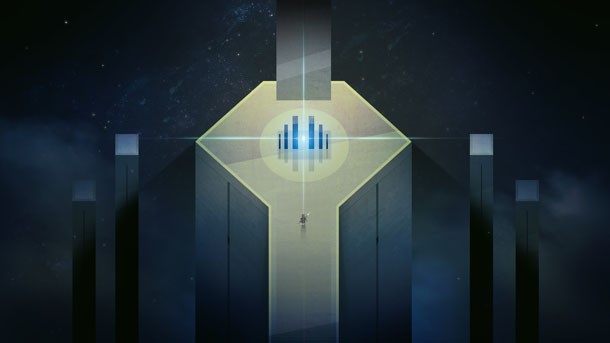
Nontraditional Multiplayer
Viewers who watch the debut Below trailers closely may have noticed more than one wanderer battling onscreen in some scenes. The game does support multiplayer, and while Capy isn’t sharing much about it at this juncture, we know it won’t be the traditional experience where you team up with your buddies in the lobby and start questing. Capy stresses that Below feels like a single-player game, but being connected to other players online has some benefits. “Certain parts of the world are changing only based on your own progress,” Piotrowski says. “Other aspects of the game are actually connected to the overall progress that characters are making on the network.”
Capy’s goal of keeping onscreen messaging, tutorials, and user interface elements to a bare minimum in service to immersion in the world applies to multiplayer as well. “You just play the game and every once in a while multiplayer things happen. You don’t have to worry about it,” Piotrowski says. “You just go in and you start playing. You’re exploring, and all of a sudden you might find yourself not quite alone in the depths.”
Xbox One Exclusive?
Capy is reluctant to put any kind of release date estimate on Below. Microsoft’s flexibility with Capy given its previous successes allows the team to spend the time necessary to get the game polished to its high standards. But what about players who may not be buying an Xbox One?
“We’re definitely huge fans of picking a platform and focusing on it,” Vella says. “Simultaneous development on multiple platforms means less people working on making a great game and more people working on the less fun stuff like porting, platform scenarios, and technical requirements. We’ve always been about making something super rad for a platform, and hopefully that game is desired enough to take it somewhere else after a certain period of time.”
